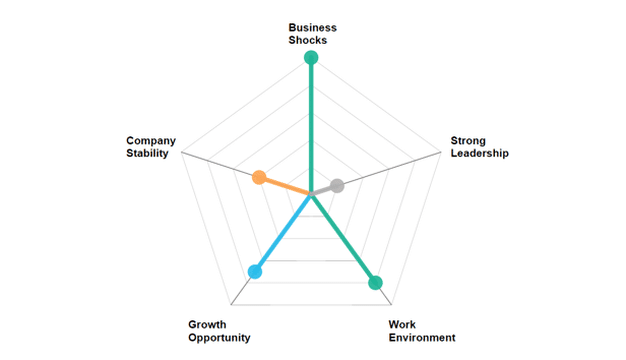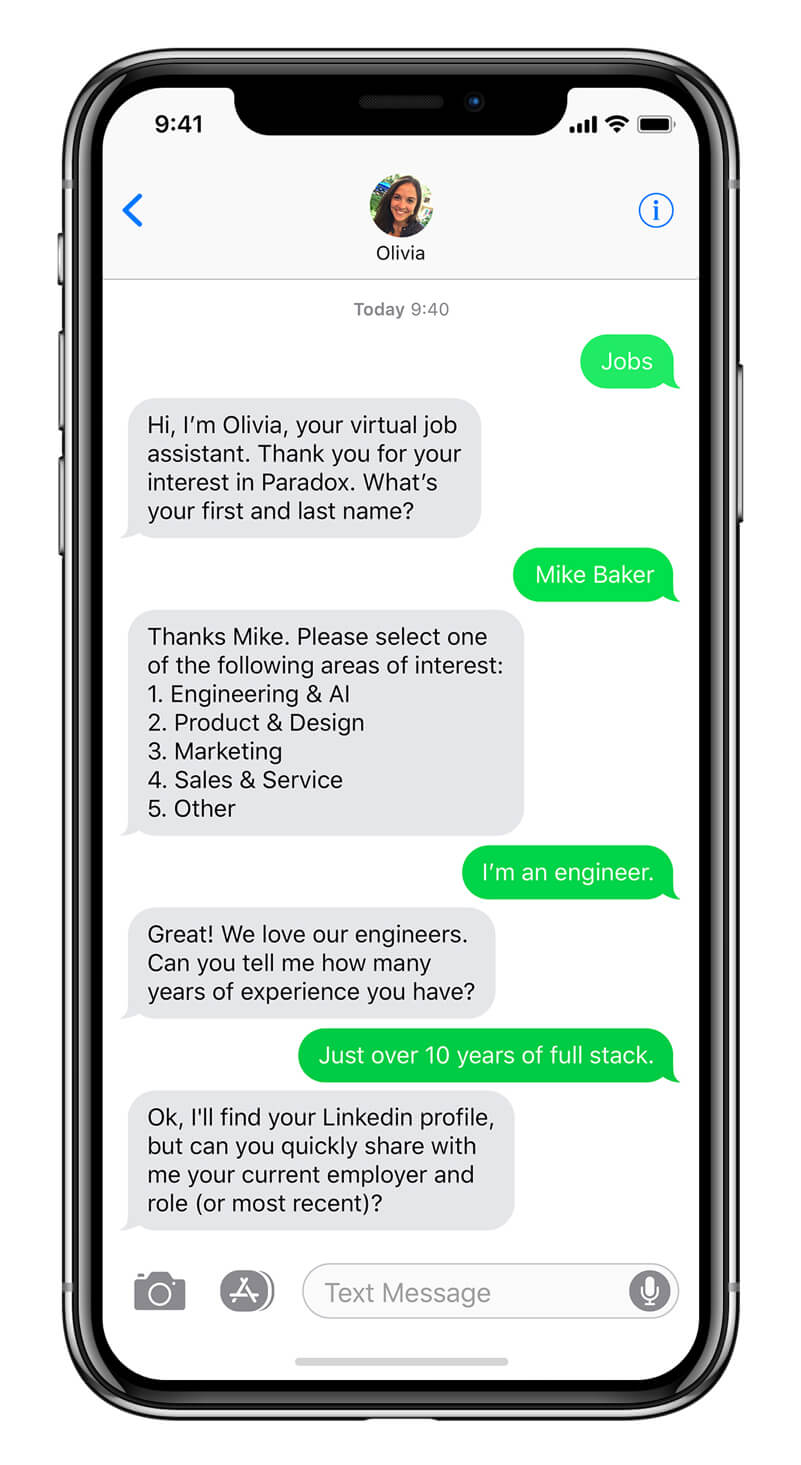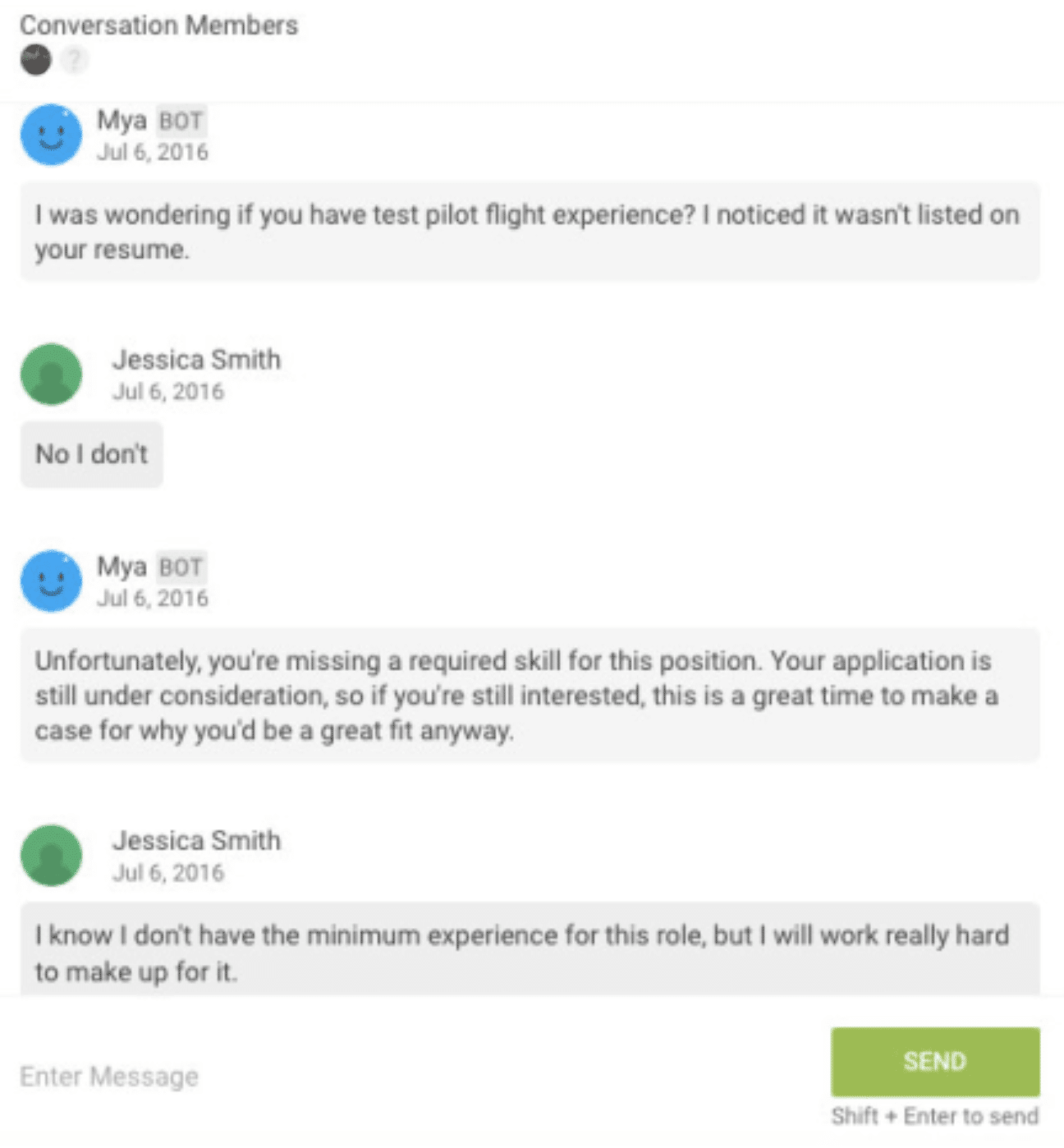Talent sourcing and recruitment are at the center of developing and maintaining the U.S. labor force. The U.S. Bureau of Labor Statistics (BLS) projects that over the decade spanning from 2016 to 2026, the labor force will increase by 11.5 million. This increase is approximately equivalent to a 0.7 percent annual growth rate.
However, along with this anticipated growth certain industries are expected to experience recruitment challenges. For example, based on a 2016 CompData survey of 30,000 organizations, the hospitality, healthcare and banking and finance industries experienced the highest job turnover rates, ranging from 18 to nearly 30 percent.
Today, machine learning is emerging as a strategy to help employers more efficiently conduct talent sourcing and recruitment.
To gauge the role of machine learning in recruitment and hiring, we researched this sector in depth to help answer questions business leaders are asking today, including:
- What types of AI applications are currently in use for recruitment and hiring?
- How has the market responded to these AI applications?
- Are there any common trends among these innovation efforts – and how could these trends possibly affect the future of recruitment and hiring?
In this article we break down applications of artificial intelligence in the domain of recruitment and hiring to provide business leaders with an understanding of current and emerging trends that may impact their sector. We’ll begin with a synopsis of the sectors we covered:
Recruitment and Hiring AI Applications Overview
Based on our assessment of the applications in this sector, the majority of talent acquisition use-cases appear to fall into three major categories:
- Talent Recruitment: Companies are training machine learning algorithms to help employers automate repetitive aspects of the recruitment process such as resume and application review
- Talent Sourcing: Companies are using machine learning to help identify top candidates from large candidate pools.
- Candidate Screening and Engagement: Companies are developing AI assistants to pre-screen candidates and to respond to inquiries regarding positions using natural language processing.
In the full article below, we’ll explore the AI applications of each application by section and provide representative examples.
Talent Recruitment
Ideal
Founded in 2013, Canadian based startup Ideal claims its virtual assistant (talent acquisition software) leverages AI to automate tedious and time-consuming aspects of the recruitment process. According to Ideal’s website, the virtual assistant reportedly integrates directly with the client’s existing Applicant Tracking System (ATS) (recruitment software) to be trained on the client’s data set.
Ideal claims its virtual assistant is already trained on “millions of past hiring decisions” so it can quickly adapt to each new client’s recruitment process. Examples of decisions may include advancing applicants to the interview stage and hiring candidates. The platform delivers two main processes:
- Resume Screening – Resume screening is traditionally performed manually, using criteria that may not be standardized for every resume. This system creates inherent bias. By using standard parameters to develop the criteria for an ideal candidate, the virtual assistant can quickly identify those desirable elements through pattern recognition.
- Candidate Sourcing – Ideal claims that its virtual assistant can use client credentials to automatically connect to third party candidate websites such as CareerBuilder. Based on the parameters set by the client, the algorithm consistently performs searches these websites to identify candidates matching criteria sought by the employer.
The 2:34 minute below, members of the Ideal team provide an overview of how the virtual assistant screens candidates:
In one case study, Ideal reports that within four months of using its virtual assistant, Canada’s largest bookstore chain Indigo (which reportedly employs over 6,500 individuals) experienced an overall 71 percent reduction in costs per hire and a tripling of qualified candidates as a result of an optimized talent pool. To provide context, Indigo claims it receives more than 2200 online applications every week.
Avrio AI inc.
Avrio functions quite similarly to competitor Ideal but its main distinctive feature is in the realm of candidate engagement. On its website Avrio claims that it incorporates a Facebook Messenger chatbot into its process to communicate with candidates in a pre-screen interview format.
The virtual assistant named Rio can reportedly ask questions which are typically included in a phone screening such as asking a candidate to describe a challenge or conflict and how he or she handled it. Among other functions, Rio can suggest salary range based on a combination of information including the range set by the employer and the candidate’s social media data. The assistant can also describe a typical day on the job to the candidate.
The 2 minute video below provides a narrated product demo which depicts the examples described above:
Talent Sourcing
Entelo
Entelo is one example of a talent sourcing software platform reportedly using AI to help companies discover quality candidates. The company claims its proprietary algorithm, More Likely to Move™, is capable of identifying individuals who have a 30 percent likelihood of changing jobs within the next 90 days.
To achieve this, Entelo has reportedly identified over 70 predictive variables which are used to analyze data from candidate profiles. Examples of variables include certain changes to a candidate’s social profile (such as updated skills on LinkedIn) and company health information for where the candidate currently works such as layoffs or stock fluctuations.
The company targets passive candidates – individuals who are open to new opportunities but are not actively seeking employment. The results of a 2016 LinkedIn survey involving over 1500 U.S. and Canada-based professionals revealed that 89 percent were interested in learning about new job opportunities.
The brief 1:07 minute video below provides an animated visual of how Entelo’s platform tracks and ranks potential candidates:
Entelo claims it provides clients with access to over 275 million passive candidates aggregated across 50 website including social media platforms such as LinkedIn. The company also lists some leading names among its clientele including Cisco, Hubspot and Visa.
In one case study , Entelo reports that Opower (an Oracle Company) was able to improve its discovery of qualified, diverse candidates. Opower reportedly increased its female hires from 40 percent to 47 percent and minority technical hires from 1.5 percent to 11 percent.
Entelo provides a decent catalogue of case studies, however details on how the platform has specifically impacted revenue for these companies is generally vague.
Readers with an interest in diversity may want to see our in-depth analysis of the prevalence of women in artificial intelligence – sorted by industry and executive position.
Engage Talent
Engage Talent’s service is essentially parallel to competitor Entelo and uses Predictive Analytics to recommend quality passive candidates based on specifications determined by the client. The algorithm reportedly driving its recommendation engine, called Engage Me!, appears to be focused around five key metrics to help predict the likelihood a candidate will change jobs.
Examples of these data sources include company stability and work environment and are depicted in the image below. These elements also help predict if a client’s company will be attractive to the passive candidate.

According to its website, the startup claims it provides access to 100 million passive candidates and lists Dell, Hilton and Allstate among its clients. While positive client testimonials are accessible on Engage’s website, it does not appear that specific case studies are available.
Candidate Screening and Engagement
Paradox Olivia
Virtual assistants are increasingly common applications of artificial intelligence and often vary in their quality and ability to deliver results. Talent acquisition is no exception, and Paradox is an AI company attempting to bring value to users through its AI assistant called Olivia.
Olivia appears to follow the general format of a chatbot (as depicted in the image below) and reportedly engages with potential candidates by handling tasks such as interview scheduling and responding to general inquiries regarding the company or position.

Paradox claims that its AI assistant achieves a 90 percent completion rate and works through through the “web, mobile platforms, or social channels.” The completion rate refers to the percentage of applicants who complete the job application process. Research suggests that longer and more complex applications tend to have a lower rate of completion.
However, since case studies are not currently provided on Paradox’s website, it’s unclear how the 90 percent completion rate translates into results. Paradox lists Sprint, CVS Health and Delta are among its clients.
Mya Systems
Founded in 2012 under the company name FirstJob and now known as Mya Systems, the company launched its AI recruiter chatbot Mya in July 2016. Mya reportedly uses natural language processing and a deep learning framework to analyze and process dialogue.
The company claims that its deep learning framework incorporates two key methods:
- Entity extraction – A method of extracting and organizing elements of text into predefined categories. Examples include names of locations, organizations or quantities.
- Sentence semantic analysis – A method of interpreting text by identifying similarity between sentences. This method can be useful for performing optimizing searches within text and categorizing elements of language.
According to the company’s website, Mya integrates directly into the user’s applicant tracking system and begins conversing with candidates after they apply for a job on the client’s website. For example, Mya reportedly screens candidates by asking follow-up questions to gain deeper insight on job experience such as determining if all required skills are met for a position.
Mya also scores applications based on information extracted from data sources such as the candidate’s resume and schedules candidate interviews. An example scenario is shown in the image below:

Mya Systems claims that for sample sizes of 4,000 more candidates, its AI assistant has reduced the time required to hire a candidate by 70 percent and 91 percent of candidates complete the candidate screening. However, specific examples of these results are not provided in case studies on the company’s website.
Concluding Thoughts and Future Trends
Successful talent acquisition is a demanding task requiring the capacity to discover and evaluate the skills and experiences of both active and passive candidates. AI is participating in a new tech-driven era of recruiting and hiring by increasing capacity and saving employers time.
A 2017 report of HR statistics compiled by Glassdoor suggests that 66 percent of millennials anticipate leaving their current jobs by 2020. With employee turnover being a challenge for companies, AI recruitment tools using predictive analytics to recommend candidates may put users ahead of their competition.
Predictive analytics may also prove useful for the retention of good hires. For example, the ability to determine the likelihood of a candidate fitting into a company’s work early in the recruitment process could improve the chances of hire staying with the company.
Despite the potential of automation to improve the efficiency and capacity of talent acquisition, there are some challenges to consider. In order to deliver value, AI requires access to large, quality data sets. Therefore, the technology may not prove as useful for companies screening a smaller set of resumes or those that do not recruit on a regular basis.
Additionally, some companies hope that AI will be able to eliminate biases in the recruitment process However, it is important to note that AI is also capable of learning human biases. Since each company is unique, these are some of the factors that should be considered when evaluating the benefits of integrating AI into the recruitment and hiring process.
For a deeper dive on the applications of AI in Human Resources, readers are encouraged to reference Machine Learning in Human Resources – Applications and Trends.
Header image credit: McKinsey Australia




















